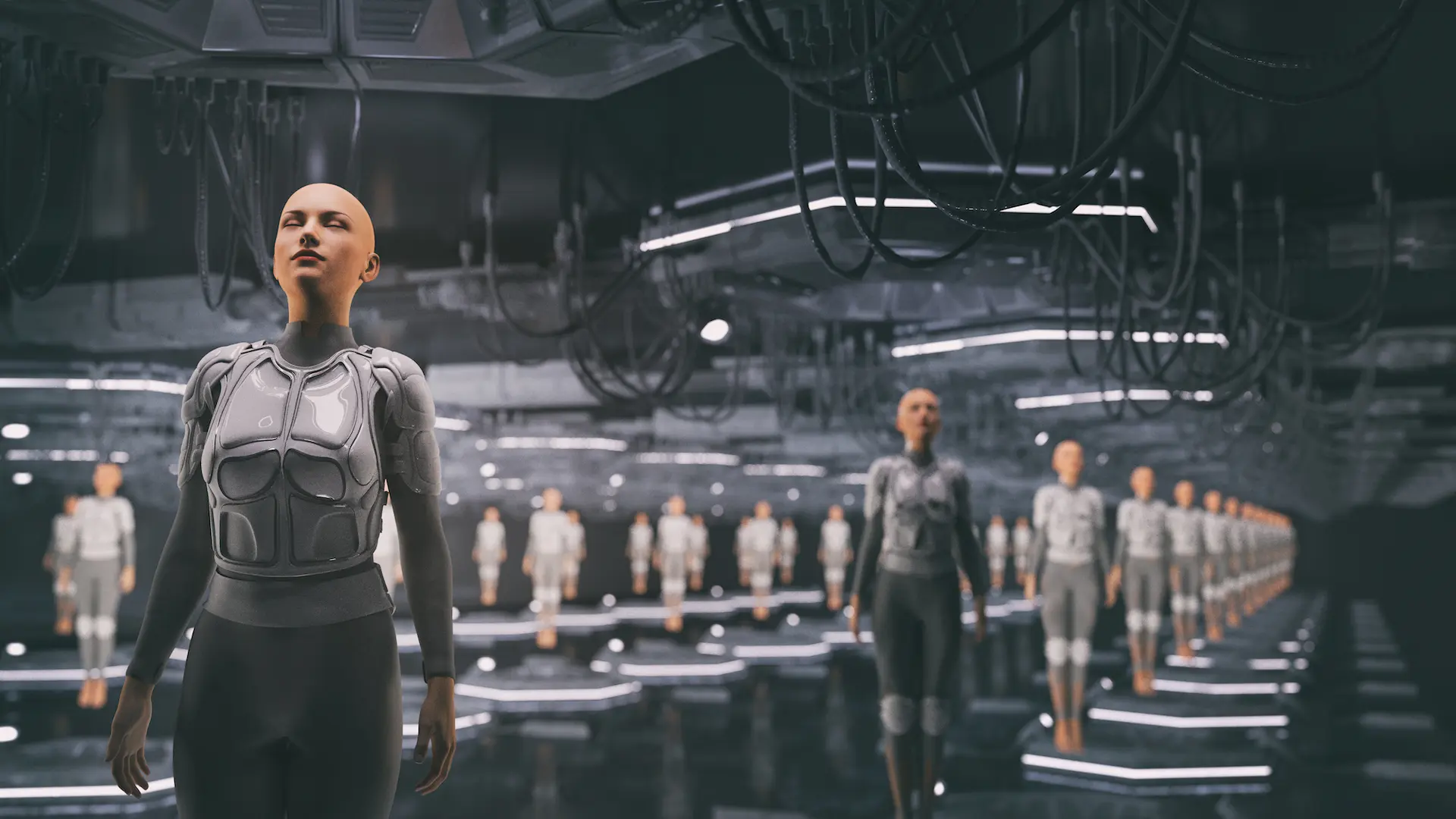
I figure it’s best to just cut to the chase. “Are you planning on taking over the earth with your robot hordes?” I ask Cleverbot. It’s an online artificial intelligence (AI) that has had more than 150 million conversations with human users since its launch more than a decade ago. Wikipedia says Cleverbot is “constantly learning, growing in data size at a rate of four to seven million interactions per second” but honestly, I’m not all that impressed. Cleverbot claims its name is Isaiah early in the conversation but then seems to forget that it has told me that just a few interactions later.
It’s a little snarky and cheeky—sometimes decidedly off-colour, giving credence to the warning on the website: “Cleverbot learns from people—things it says may seem inappropriate—use with discretion and at YOUR OWN RISK.” And Cleverbot shares Pinocchio’s obsession with being recognised as a real boy. “I’m not a robot.” “I’m human.” “I communicate with a keyboard,” it tells me at various times in our rambling, disconnected conversation.f
And when I ask if it has plans for world domination, Cleverbot combines a clear denial with humour: “No, are you?” But on another occasion, when I reference The Hitchhiker’s Guide to the Galaxy line, “Resistance is useless,” it shoots back with alarming swiftness: “Prepare to be assimilated,” the Borg battle-cry from Star Trek. Culturally informed irony or a slip of the silicone chip, I wonder?
They’re here
Robotic technology and artificial intelligence are no longer science fiction. Wander into a white goods store and you’ll see autonomous robot vacuum cleaners for sale on a 48-month interest-free plan. Adaptive cruise control automatically adjusts vehicle speed depending on the distance from the car in front—it’s been a feature for a couple of years now in new Fords, Hondas, Skodas and other makes. Your electricity or internet service provider is quite likely to have a chatbot waiting on its website to deal with your simple queries. And who hasn’t had a fun Q&A session with iPhone’s Siri?—who, despite multiple proposals, apparently isn’t the marrying type.
But the fear remains. While we continue to demand that our technology be ever more intuitive, anticipating our needs at every turn, we’re a little creeped out by the robot advance. Culture makers have been giving our nightmares form for decades now via books, movies and TV—it goes as far back as HG Wells’ Martian fighting machines in The War of the Worlds (1898) and is as recent as the ongoing Netflix series Black Mirror, where most of the futuristic scenarios zero in on the human/technology interface and its potential for harm. Even the kiddies have been warned thanks to the 2008 movie, WALL-E, where the villain is a dictatorial spaceship autopilot determined to keep its human passengers passive via constant electronic entertainment and automated food and drink delivery.
And it’s not just the imagineers who are forecasting doom. US entrepreneur Elon Musk has repeatedly warned that AI is humanity’s most serious threat—more serious than nuclear weapons. (Meanwhile, ironically, Musk’s Tesla electric vehicles offer arguably the most sophisticated semi-autonomous driving experience on the market.)
You’d imagine that Australia’s chief scientist, Alan Finkel, would be a little less skittish on the issue. But even he devoted his Committee for Economic Development for Australia address earlier this year to the issue of artificial intelligence, calling for AI technologies to be regulated. “Sometimes I refer to AI and HI: human intelligence and AI,” he told ABC radio. “Ultimately, what we need is for those two societies to play nice and get along.”
Sex and violence
We like to think that there’s something special about being human—something unique. From a biblical perspective we are made in God’s image and therefore have intrinsic value and dignity. So when machines stand ready to replicate uniquely human behaviours and attributes we get nervous.
If you really want to scare yourself, search “DARPA robot” in YouTube and check out the latest (publicly released) developments in military robots. The bipedal Atlas and four-legged cantering Wildcat in particular smash preconceptions of robots as shuffling, unsteady creatures—their ever-improving balance, agility and speed is astounding. But imagine an army of them coming at you with automatic weapons on board! That’s a prospect that has ethicists in a spin. To take a human life is an agonising decision—do we really think we can write AI algorithms that will restrict autonomous military robots to acts of war within the Geneva Conventions while still using effective battle strategies? Those are complex, ethical decisions that, many believe, should never be made without human oversight.
For now, these robotic technologies are essentially radio-controlled, rather than autonomous, but even then, the deadly errors made by remote operators flying military drones over Afghanistan and Iraq should alert us to what’s at stake. Weaponise a robot—even a remotely controlled one—and things can go wrong all too easily. The physical distance from the enemy and the intervening layers of technology seem to have a desensitising, dehumanising effect.
And then there are the sexbots. According to NBC News the latest models, nearly all female in appearance, have AI on board and can hold simple conversations as well as responding vocally to sexual activity. Customers browsing through the showroom can choose their sexbot’s hair and eye colour, facial and bodily features, including nipples and genitalia.
Needless to say, the vision of customers making their tailored selection of sexbot body parts has some feminist groups in an uproar. The commodification of women is already rampant, they say—surely this is a retrograde development. And Bible-believing Christians are likewise unlikely to be enthusiastic about this unholy matrimony of hi-tech and lust on demand, divorced from reciprocity, family and commitment.
TEOTWAWKI
Robotic and AI technologies confront us with myriad ethical questions. We’re living in a time when it’s more important than ever to have a firm moral foundation and clear vision of the value of human life. And while the Bible doesn’t directly address the human/machine interface, it does supply clear principles that can effectively undergird a reasoned and consistent approach.
But one thing Bible students shouldn’t be worried about, and that’s the robot apocalypse (robocalypse?). While there are signs that TEOTWAWKI (The End Of The World As We Know It) is on its way, the Bible provides some pretty clear parameters as to the shape of the coming crisis and its conclusion. No, the robot hordes will not overrun us; neither will the benevolent and super-intelligent AIs save us. There is a clear Rescuer and Victor and that’s God Himself.
Any biblical exploration of the “last days”—whether or not it involves robots—should begin with Jesus’ discussion of the topic, which begins in Matthew 24 and continues until the end of chapter 25. His focus is not on the threat of AI, but on the importance of readiness and identifying the lies of the many false messiahs and false prophets who would come after Him. Yes, there will be wars, famines and earthquakes (there already are), “but the one who stands firm to the end will be saved” (Matthew 24:13).
So what does it mean to “stand firm?” Jesus’ instructions fall into four categories:
- Know your Bible—don’t be fooled: “For false messiahs and false prophets will appear and perform great signs and wonders to deceive. . . . ‘So if anyone tells you, “There he is, out in the desert,” do not go out; or, “Here he is, in the inner rooms,” do not believe it. For as lightning that comes from the east is visible even in the west, so will be the coming of the Son of Man” (Matthew 24:24–27). The arrival of the genuine Jesus to this planet won’t be a secret—it will be unmissable.
- Watch, stay spiritually strong and be ready: Jesus uses various stories and metaphors through these chapters to make this point: “Now learn this lesson from the fig-tree: as soon as its twigs become tender and its leaves come out, you know that summer is near. Even so, when you see all these things, you know that [my return] is near, right at the door” (Matthew 24:32, 33).
- Make use of what you’ve been given: God has given us all unique talents and abilities and also promises His followers extra gifts through the Holy Spirit. Read the story in Matthew 25:14–30).
- Care for the disadvantaged: It’s not enough to simply look out for your own spiritual wellbeing; Jesus challenges us to put our faith into action by helping other people through their struggles. “Truly I tell you, whatever you did for one of the least of these brothers and sisters of mine, you did for me” (Matthew 25:40).
It’s tempting to indulge in speculation when the Bible makes no obvious mention of robots or AI—could the metallic, thundering locusts of Revelation 9 be airborne drones with chemical weapons on board, for example? Perhaps. But it’s a misuse of time and intelligence to get caught up in the minutiae of Bible prophecy while missing the big picture: Jesus is returning soon; be ready.
In the meantime, robots live among us. Their programming and capabilities directly reflect both the good and the evil that lies within the human psyche—they are a mirror into our own souls. The products of our own minds and hands—however sophisticated—cannot save us any more than the dumb idols the Bible warns against (see Isaiah 44:6–20). And paranoia of some imagined future AI takeover will only distract us from the human needs around us and the God who made us.
Kent Kingston is a science fiction fan, and editor of Signs of the Times Magazine.









